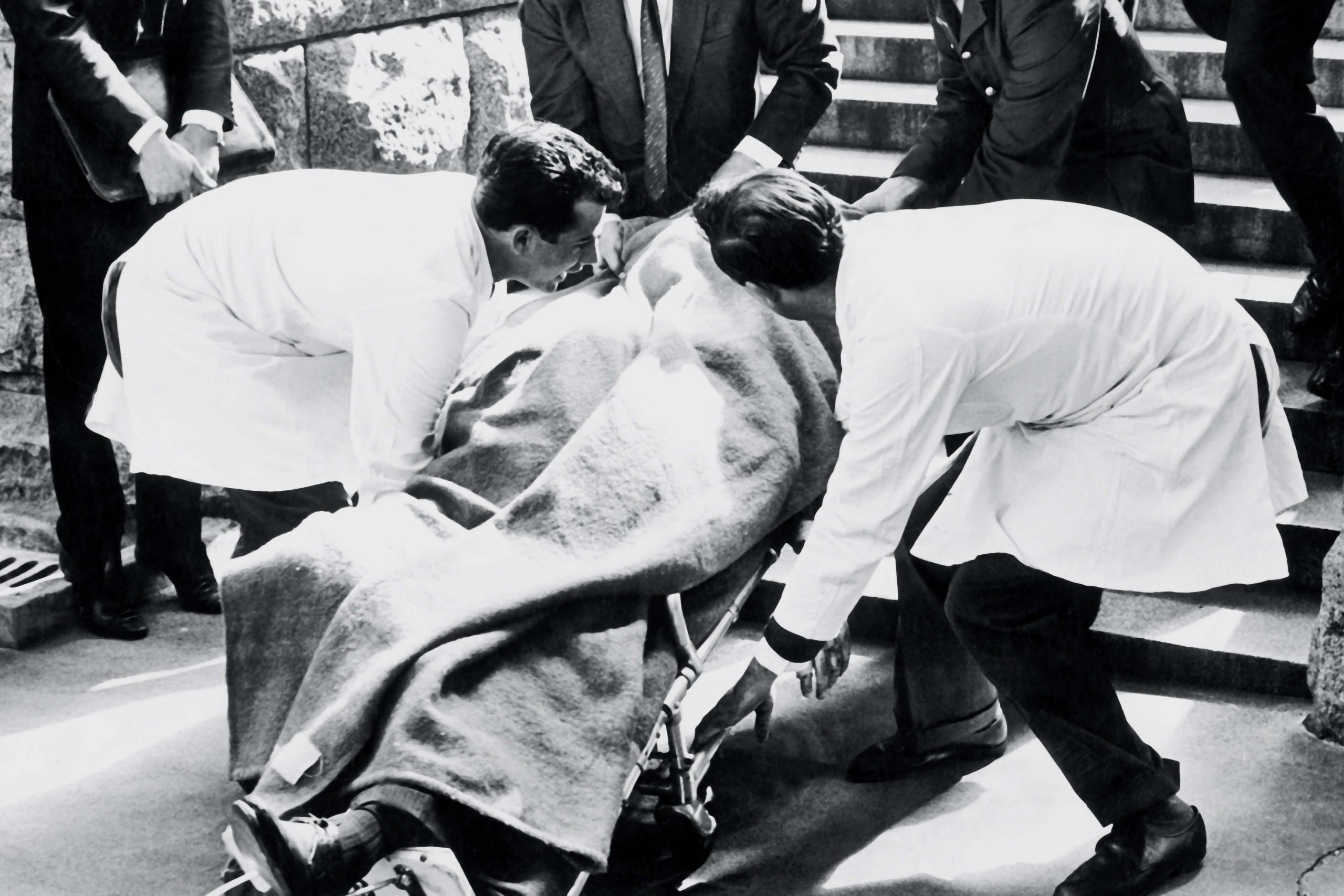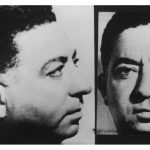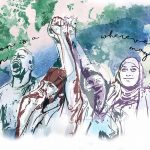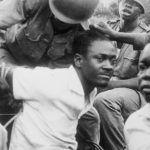Verwoerd’s radical assassin
Dimitri Tsafendas was labelled mentally unstable for decades, obscuring his political motive in killing the architect of apartheid. Now the record has been set straight.
Author:
4 February 2019

The Man Who Killed Apartheid – a book about Dimitri Tsafendas, the man who killed Hendrik Verwoerd – is a profound betrayal of a belief held by the assassin. In the late 1990s, just before Tsafendas’ death in 1999, as his friends tried to persuade him to let the world know the real reason why he killed Verwoerd, he told them: “When you do a good thing, you can’t go around advertising it. You do it because it is the right thing to do, not to be applauded by others. Do a good thing and throw it into the sea.”
The good deed to which Tsafendas was referring was stabbing Verwoerd to death on the afternoon of 6 September 1966. He was working in Parliament in Cape Town as a messenger when he realised that Verwoerd, whom Tsafendas described as “Hitler’s best student”, was within reach. Tsafendas’ reasoning was that “every day, you see a man you know committing a serious crime for which millions of people suffer. You cannot take him to court or report him to the police because he is the law in the country. Would you remain silent and let him continue with his crime or would you do something to stop him?”
Yet for decades the reason given for why Tsafendas stabbed Verwoerd was because “the tapeworm made him do it”. In fact, even though he had killed the architect of apartheid, Tsafendas wasn’t even tried as he was believed to be insane and therefore unfit to face trial. A subsequent enquiry into the killing “strengthened the idea that the assassin was a hopeless lunatic” and, so for about five decades, scholars and writers who should have known better routinely wrote of Verwoerd’s killing as the work of a mentally disturbed man.
Related article:
In Mandela: A Biography (2010), Martin Meredith, a British author who has written for The Guardian, writes that Verwoerd was “assassinated in the National Assembly by a deranged parliamentary messenger”. Most of the times Tsafendas made cameo appearances in history books, it was as a nameless man, stripped of an identity and with his act of stabbing Verwoerd deemed the result of a fevered mind.
So, for many reasons, The Man Who Killed Apartheid by scholar Harry Dousemetzis and Gerry Loughran is an important book as it gives agency back to Tsafendas, a man rightly eulogised by a friend as a “Displaced Person, Sailor, Christian, Communist, Liberation Fighter, Political Prisoner, Hero.”
Upbringing
Tsafendas was born to Michalis, a Greek-Mozambican man who had picked up anarchist ideas while studying marine engineering in Italy. Tsafendas was separated from his mother, Amelia, a woman with a German father and an African mother, in infancy. He knew nothing about her until he was an adult.
In the Mozambique in which Tsafendas was born, in 1918, “there were distinct advantages in being white, both for a person’s current situation and future prospects”. Even with these difficulties, Tsafendas’ father lived for months with his infant son and his black mother before Michalis succumbed to pressure from his mother in Alexandria, Egypt, to marry a fellow Greek. As he didn’t want his wife to know about this “half-caste” child, the young Tsafendas was sent to Alexandria to live with his grandmother until his return to Mozambique at the age of nine, when he was reunited with the rest of Michalis’ family.
Related article:
By the age of 10, Tsafendas was already displaying the traits of a wanderer. He had a way with languages – handy, if you’re going to be a nomad – and could speak Greek, Portuguese, Arabic and English. Even though he had a sharp mind, able to absorb and sort information and knowledge, and was a voracious reader (his target was to read a book every week), he didn’t have the discipline needed to follow a career path. He refused to become a marine engineer like his father, or to study at a university, which didn’t bother his father as long as Tsafendas didn’t become a professional soldier or police officer.
It was while working at a bookshop-cum-publishing house in Lourenço Marques, owned by his father’s friend, Dimitris Spanos, that Tsafendas continued his education in communism and anarchism, the cornerstone of which had been laid at home. It was, crucially, while working with Spanos that Tsafendas first got a sense of how black Mozambicans lived in the rural areas of the country. On weekends, Spanos used to go to villages to distribute books and newspapers, sometimes delivering consignments of medicine, for which he would refuse payment.
On one of these trips, Tsafendas accompanied Spanos and was shocked by the poverty he saw: “mud huts and hovels for houses, open sewers, no toilets, often no clean water, raggedly dressed people”. Spanos shot down his more crazy ideas, which included persuading his father to buy food for these villagers every week, and so Tsafendas decided that every weekend he would go to the villages and teach the residents English and history. Further talks with Spanos and Soviet seamen on the docks of the port at Lourenço Marques persuaded Tsafendas that only communism could change the lives of these people.
‘The Red’
In time, the Greek community in the city came to refer to him as “The Red” and so when he applied for a visa to visit South Africa in 1938, at the age of 20, it’s no surprise that his application was rejected. His “half-caste” status and the suspicions contained in the Portuguese secret police files of his “disseminating communistic propaganda” had come to the attention of the South African authorities.
Disregarding the ban, he crossed the border illegally and found a job as a welder with the British Mining Supply Company. Tsafendas soon rekindled his relationship with communism; in Johannesburg, he joined a union and the Communist Party, and would deliver pamphlets and put up anti-Nazi propaganda graffiti in the city.
Related article:
On 13 June 1942, a few days before he was due to be deported by South African authorities, Tsafendas left for Canada aboard a Greek ship. It was a momentous departure, the beginning of travels and travails that saw him traverse many countries. It was the last time Tsafendas saw his father and it would be another two decades before he came back to South Africa to perform an act for which he will be remembered for eternity. In all he did over those two decades, he obeyed his father’s injunction to be “a useful member of society” – for the most part.
I qualify that as it was because Tsafendas refused to become “a useful member of society” that he encountered a man who gave him the idea of the tapeworm. He had boarded that ship “brimming with anti-fascist zeal” and yet, when he landed in Canada and heard stories of Allied ships being sunk by German U-boats, he became afraid. The Canadians, classifying him as a deserter, detained him. But together with several others, Tsafendas escaped from prison on a wintry December day.
Descent into ‘madness’
After about three weeks of walking in the rain and snow, with little extra clothing and not enough food, the escapees crossed the border into the United States and were promptly arrested for breaking immigration law. The Americans gave Tsafendas two options: “stay in prison or rejoin the navy”.
Still gripped by the fear of being torpedoed while out at sea, Tsafendas chose to stay in prison, where he started pretending to be mad. He told the warders that he was hearing voices from the radiator and was transferred to a mental institution where he met an Irishman called Tony Tuff, also a merchant seaman, a schizophrenic who had perfected his madness into an artform.
Tuff claimed he was so thin because a tapeworm in his stomach was helping itself to his food; he would regularly ask the cooks for more food to “feed the worm”. It was a novel idea that seemed to impress everyone in the prison, including the female nurses, who gave Tuff extra attention. About Tuff and his tapeworm story, Dousemetzis and Loughran write: “Tsafendas was deeply impressed.”
Tsafendas adopted the story of the tapeworm as part of his armoury and, over the years in London, the Isle of Wight, Portugal and South Africa, this parasite would recur. But before Tsafendas and his tapeworm shot to global fame after he stabbed Verwoerd in parliament, the nomad travelled and worked in Hamburg, Munich and Greece, where he fought with the Communist Party in the Greek Civil War, and lived and worked as an English teacher in Istanbul.
He eventually got his visa to return to Mozambique, in 1963, after managing to convince the Portuguese secret police that he had shaken off his radical politics. The following year, however, he was heard saying, “This land is not called Portugal, it is called the United States of Mozambique; our flag has the colour blue and a rainbow, a rainbow that represents all the colours … Do not be fooled by my colour, my mother was African, I am also an African.”
Related article:
It was South Africa, however, which the Cape Times called “Verwoerd’s Native Empire”, whose monstrous politics made his heart ache and where he longed to be.
The South Africa to which Tsafendas would return was different to the one he left in 1942. “Every night, pass raids were visible at each street corner … The law was weighted entirely against accused persons. Prisoners awaiting trial could be held for up to 180 days without access to a lawyer, then, when that term ran out, the 180 days could be reimposed, not just once but indefinitely … It was impossible for families, reporters or lawyers to discover who had been arrested or where a person was being held. No such information was ever divulged. Detainees would simply disappear.”
On 8 March 1965, Tsafendas arrived in Durban from Beira, Mozambique, aboard the Karanja and soon made an impression on those with whom he interacted, including defending Africans who were being ill-treated by Afrikaner racists. Ever conscientious, he also applied to be reclassified as a coloured person, a request that astonished the bureaucrats dealing with his case. In the end Tsafendas was given a blank identity card.
It was while in Cape Town, the scene of the crime, that he confided to a friend: “If I ever got hold of Dr Verwoerd, I would bash his skull.” He soon got the opportunity when he got a job as a messenger, which placed him in proximity to Verwoerd.
Dimitri Defendus
All of the above invites crucial questions. If Tsafendas’ act was, in his own words, “an act of profound moral principle”, why is the stabbing not remembered as such? Why is it that the ANC government hasn’t done much to rehabilitate the memory of a man whose act black people celebrated at the time by referring to Tsafendas by the new, revolutionary sobriquet of Dimitri Defendus?
If the nationalist government had all this intelligence on Tsafendas’ past political activism, why did it allow the narrative of the tapeworm to take centre stage? And how was a man on the government’s list of prohibited immigrants not only allowed to enter South Africa but also to work in Parliament?
Verwoerd wasn’t an average racist and bureaucrat, he was fanatical and fervent in his belief in apartheid. Anti-apartheid activist and politician Helen Suzman said no one was as sure about apartheid as Verwoerd, for whom the policy was “religion”. She said “there was no doubt that [John] Vorster was determined to maintain white domination, but that was a very different thing. It wasn’t based in any philosophy the way Verwoerd was.” So if Tsafendas’ act robbed apartheid of the man who had the zeal of an apostle and the vision of a prophet, why wasn’t his assassin executed?
The Man who Killed Apartheid – a crisply written, 500-page work of painstaking scholarship at whose heart is a Dickensian energy – answers these questions. Dousemetzis and Loughran have done well to torpedo Tsafendas’ injunction to “do a good thing and throw it into the sea”. But of all the things to be retrieved from the bottom of the sea, the Tsafendas portrayed in The Man Who Killed Apartheid is an absolute treasure.




